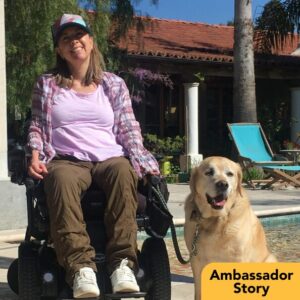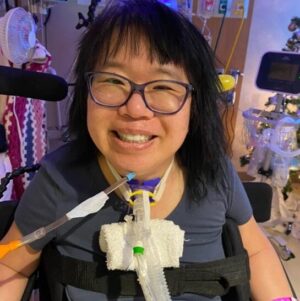At 31 years old, Tricia Downing was in the best athletic shape of her life and on her way to becoming a National Championship cyclist when she was struck by a car on her bike. She has been living with a T4 spinal cord injury and paralysis from the chest down since 2000. Today, Tricia is a World Championship adaptive athlete as well as an author, public speaker, blogger, and advocate.
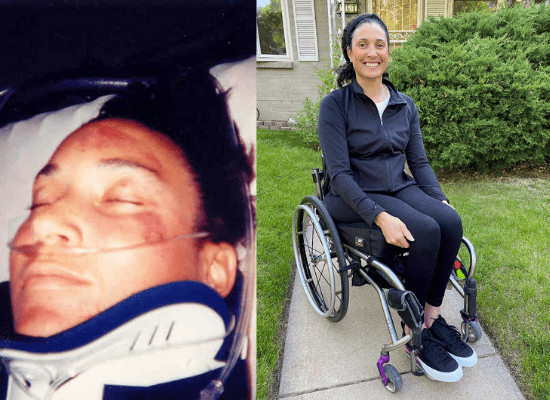
Where did you find support early in your SCI journey?
I was injured in the years before social media use or online fundraising campaigns were common—hard to believe, right? In addition to my friends and family, the support I received was primarily from my Denver bike racing community and Craig Hospital, where I did rehabilitation.
How did your perspective on your life after SCI shift over time?
I had worked with athletes with disabilities before I was injured myself, so I knew that there was life after SCI. Of course, I didn’t realize how challenging it is to make the transition to living with a disability, the financial end, or the long road of rehabilitation—but I kept looking forward, knowing that there was a light at the end of the tunnel.

What are some of the impacts of your injury you still live with today?
I do live with ongoing physical impacts of the injury, including chronic pain and overuse injuries. I think I also have emotional impacts from my injury, but I work hard to keep them in check and address them as they come up.
It gets easier over time.
In the beginning, it was sometimes hard to remain positive and optimistic. Rehabbing is definitely a journey. It’s not a simple, sudden change: it’s years of coming to terms with a new life.
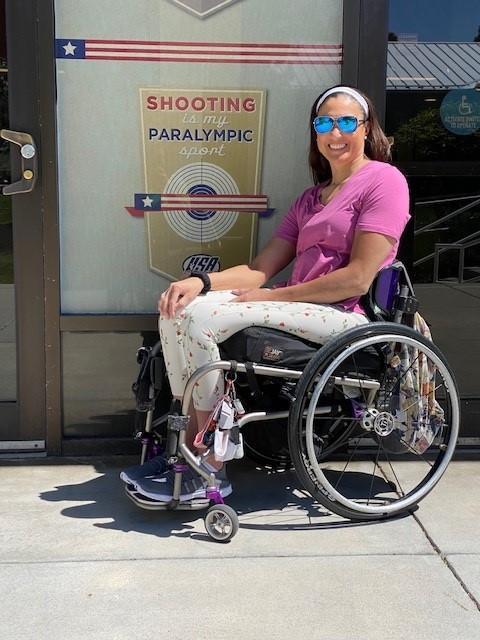
None of us are perfectly resilient in every difficult situation.
But if we can bank skills and assets like support systems and learn to problem-solve, it gets easier to gain the confidence that no matter how difficult the situation you are in, you will get through it.
I would tell any newly injured individual to give it time—change doesn’t happen overnight. I gave three to five years of my life trying to get to a place where I was just content and felt positive about my future. It took even longer to be able to say with honesty, “I’m really happy and I have a good life.”
We all have to do the best we can to remain optimistic and believe in hope. To me, hope means having something to look forward to, and knowing that you can continue to improve your life if you want to put in the effort and belief.
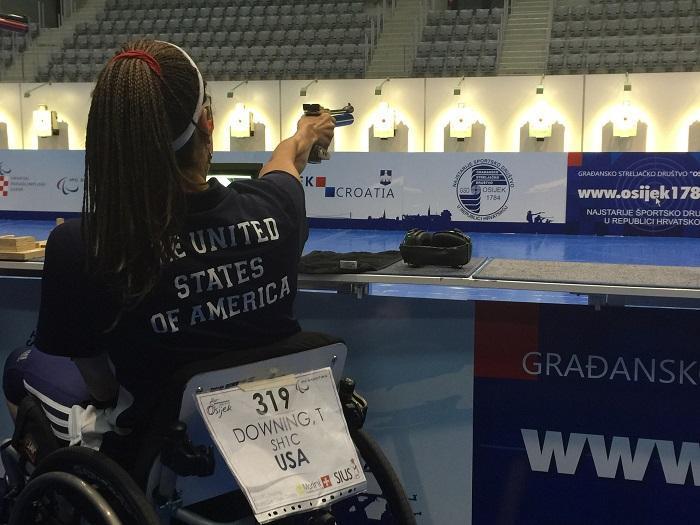
What does a day in your life look like?
Right now, I work from home as a Learning Designer. I design curriculums for professional services and work eight hours per day.
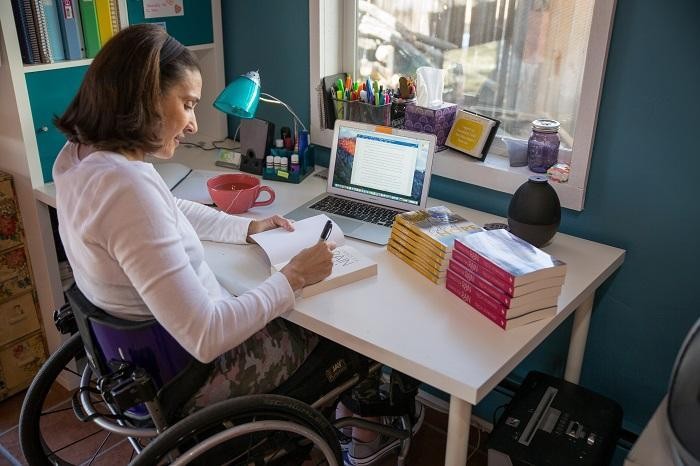
After work, I typically work out or train in shooting. I am a 2016 Paralympian (pistol athlete), and hope to train for the 2024 Paralympics in Paris.
Is life with a spinal cord injury expensive?
Life with an SCI is extremely expensive, and that’s probably the most difficult part.
It’s almost like you have two choices to afford life with an SCI: live at or below the poverty level on SSDI; or find a way to make an above-average salary at a regular job. Unfortunately, most individuals living with SCI fall somewhere in the middle, so there is a lot of financial struggle.
The hardest things to afford for me have been my accessible van, wheelchairs that are truly functional for an active lifestyle, and (adaptive) sports equipment. I have spent a good portion of the last 20 years in a great deal of debt, always struggling to stay afloat.
Recently, I decided that I wanted a new power chair that would be functional and sporty and allow me to take the stress off of my arms, shoulders, elbows, and wrists. That’s when I began partnering with Help Hope Live for fundraising.
It’s unfortunate that people with disabilities always have to resort to asking for assistance.
It shouldn’t cost so much to live with a disability, especially because every day is already challenging before you pile on huge bills. It can be overwhelming and disheartening sometimes. Fundraising has been a great help in my life.
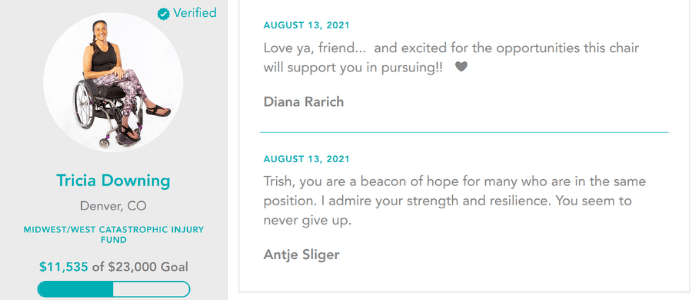
When did you begin engaging in advocacy?
I think I’ve always been an advocate.
To some extent, anyone with a disability has to be an advocate, because our society is not set up to accommodate us. Since I’ve had so much help and support as an athlete, and I’ve had good luck finding jobs, building a support system, and accessing great medical care, I want to pass on what I’ve learned to others.
When I was the director of Camp Discovery, a fitness and wellness camp for female wheelchair users, we were able to see many women reach goals that they otherwise might not have had access to.
Are there a lot of misconceptions about life with an SCI?
It can feel almost degrading when people tell you you’re an inspiration for everyday things like opening a door or being at the grocery store. A lot of people believe that individuals with disabilities can’t do everyday things, that we don’t go out in public, or that we don’t need accessible spaces, programs, or services.
What’s behind your concept “Redefining Able”?
“Redefining Able” is my way of saying that there is more than one way to be “able” in life. It’s not just about being able-bodied: that’s only one way to be able. We need to define in our society that people with disabilities aren’t less than, and there is nothing “wrong” with them.
We’re just like everyone else—people, having a human experience.
It just might look different for us than it does for others.
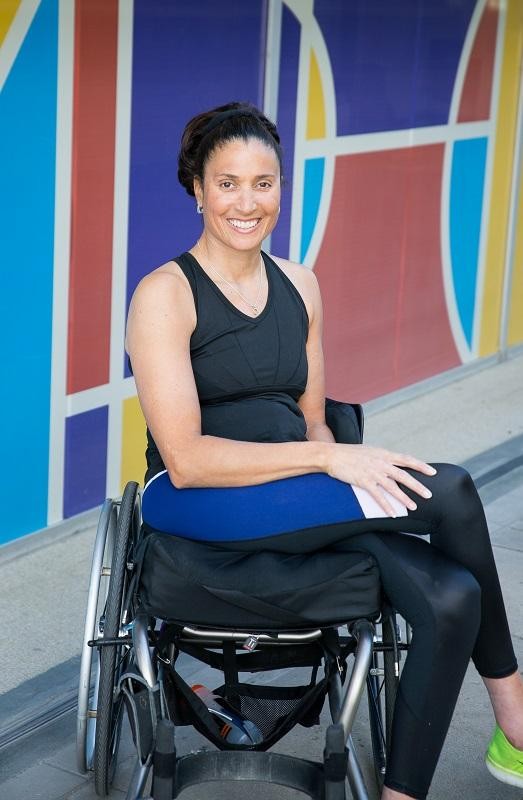
Find Tricia’s Campaign Page at helphopelive.org. Her website is triciadowning.com.
Written by Emily Progin
